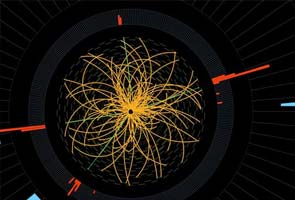
The mass of the so called 'God particle', uncovered at the Large Hadron Collider (LHC) in Geneva, is a key ingredient in a calculation that signals the future of space and time.
"This calculation tells you that many tens of billions of years from now there will be a catastrophe," Joseph Lykken, a theoretical physicist at the Fermi National Accelerator Laboratory in Batavia said.
The sub-atomic particle is a manifestation of an energy field pervading the universe called the Higgs field, which is thought to explain why particles have mass, 'LiveScience' reported.
Physicists at the LHC announced in July 2012 that they had discovered a new particle whose properties strongly suggest it is the Higgs Boson.
To confirm the particle's identity for sure, more data are needed. But many scientists say they're betting it is the Higgs.
"This discovery to me was personally astounding," said I Joseph Kroll, a University of Pennsylvania physicist.
"To me, the Higgs was sort of, it might be there, it might not. The fact that it's there is really a tremendous accomplishment," Kroll said.
And finding the Higgs, if it's truly been found, not only confirms the theory about how particles get mass, but it allows scientists to make new calculations that were not possible before the particle's properties were known.
If that particle really is the Higgs, its mass turns out to be just about what's needed to make the universe fundamentally unstable, in a way that would cause it to end catastrophically in the far future.
Because the Higgs field is thought to be everywhere, so it affects the vacuum of empty space-time in the universe.
"The mass of the Higgs is related to how stable the vacuum is," said Christopher Hill, a physicist at Ohio State University.
Scientists said if the Higgs mass were just a few per cent different, the universe would not be doomed.
No comments:
Post a Comment